Angelina's AP Help
I sell high-quality study guides and notes for the 10 AP classes and various Honors classes I took throughout high school. I earned a 5 on all of the following AP exams: World History, Psychology, Computer Science Principles, U.S. History, Microeconomics, Macroeconomics, Calculus AB, Literature, and U.S. Government. I earned a 4 on the AP exam for Human Geography, and maintained a 4.0 unweighted GPA throughout all 4 years of high school. The items that I sell can help you pass your AP exams and classes with flying colors!
- 10
- 0
- 0
Community
- Followers
- Following
10 items
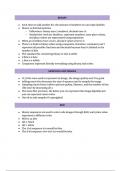
AP Computer Science Principles (CSP) Comprehensive Study Guide
This comprehensive study guide for AP Computer Science Principles (CSP) covers every idea you’ll need for the AP exam in May. They can also be used to study for a midterm or a test for concepts. The following topics are described in-depth: binary, sampling and images, RGB, lossless vs lossy compression, intellectual property, the World Wide Web, internet protocol, IP address, User Datagram Protocol (UDP), Transmission Control Protocol (TCP), packets, boolean expressions, robot movement, while ...
- Summary
- • 10 pages •
This comprehensive study guide for AP Computer Science Principles (CSP) covers every idea you’ll need for the AP exam in May. They can also be used to study for a midterm or a test for concepts. The following topics are described in-depth: binary, sampling and images, RGB, lossless vs lossy compression, intellectual property, the World Wide Web, internet protocol, IP address, User Datagram Protocol (UDP), Transmission Control Protocol (TCP), packets, boolean expressions, robot movement, while ...

Frankenstein (1831) Notes for AP Literature
These notes are based on the 1831 edition of Frankenstein by Mary Shelley. The notes are convenient and easily organized based on the chapter/letter where the details were found. At the end of almost every bullet, there are page numbers that correspond to where the detail was found (however, these page numbers correspond to the copy published by Wisehouse Classics). Because of this, they are especially useful if you want to find specific details in the book. The bulleted notes provide many d...
- Book
- Interview
- • 14 pages •
These notes are based on the 1831 edition of Frankenstein by Mary Shelley. The notes are convenient and easily organized based on the chapter/letter where the details were found. At the end of almost every bullet, there are page numbers that correspond to where the detail was found (however, these page numbers correspond to the copy published by Wisehouse Classics). Because of this, they are especially useful if you want to find specific details in the book. The bulleted notes provide many d...

AP Microeconomics Unit 2 Notes: Price Elasticity, Marginal Analysis, and Government Intervention
These notes are for Unit 2 of AP Microeconomics, but they can be used by anyone aiming to learn about supply and demand through a microeconomic lens. The main topics covered: marginal analysis, price elasticity of demand and supply, and the effects of government intervention in markets. These notes give details on market economies, command economies, mixed economies, explicit costs, implicit costs, cost-benefit analysis, and marginal analysis. There are charts to demonstrate and explain marg...
- Interview
- • 5 pages •
These notes are for Unit 2 of AP Microeconomics, but they can be used by anyone aiming to learn about supply and demand through a microeconomic lens. The main topics covered: marginal analysis, price elasticity of demand and supply, and the effects of government intervention in markets. These notes give details on market economies, command economies, mixed economies, explicit costs, implicit costs, cost-benefit analysis, and marginal analysis. There are charts to demonstrate and explain marg...
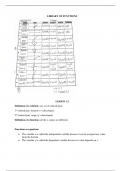
Pre-Calculus Honors Chapter 1 Notes
Multiple function types are described, including the domain, range, and graphs. How the x- and y-values are impacted based on shifts and reflections are described. I also describe how to identify increasing, decreasing, and constant functions. Various types of symmetry, including symmetry in the x-axis are described. There are examples of composite functions and inverse functions and how to identify one.
- Summary
- • 7 pages •
Multiple function types are described, including the domain, range, and graphs. How the x- and y-values are impacted based on shifts and reflections are described. I also describe how to identify increasing, decreasing, and constant functions. Various types of symmetry, including symmetry in the x-axis are described. There are examples of composite functions and inverse functions and how to identify one.

A Streetcar Named Desire Notes and Analysis
In these notes taken from class, I list important details that can be used to write an analysis for “A Streetcar Named Desire” by Tennessee Williams. These notes are separated by scene and provide details to analyze various characters, including Blanche, Stanley, Stella, and Mitch. I pinpoint areas that prove that Blanche likes to soften things and believes that deception can return her to a luxurious life that she’s already lost. Additionally, I provide details that support the fact that ...
- Book
- Interview
- • 4 pages •
In these notes taken from class, I list important details that can be used to write an analysis for “A Streetcar Named Desire” by Tennessee Williams. These notes are separated by scene and provide details to analyze various characters, including Blanche, Stanley, Stella, and Mitch. I pinpoint areas that prove that Blanche likes to soften things and believes that deception can return her to a luxurious life that she’s already lost. Additionally, I provide details that support the fact that ...
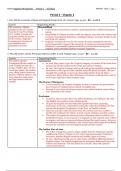
AP United States History (APUSH): Unit 2 Notes - Early English Colonies
These notes answer questions related to Chapter 2 of the textbook, America's History, For the AP® Course 8th Edition, designed for a part of Unit 2 of AP United States History (APUSH). These notes focus mainly on early European colonies in the Americas, especially colonies owned by England. For all questions in these notes, I provide many details and explanations that will give you a deep understanding of the topics. The following outlines what topics are covered by each question. Question 1...
- Book
- Interview
- • 7 pages •
These notes answer questions related to Chapter 2 of the textbook, America's History, For the AP® Course 8th Edition, designed for a part of Unit 2 of AP United States History (APUSH). These notes focus mainly on early European colonies in the Americas, especially colonies owned by England. For all questions in these notes, I provide many details and explanations that will give you a deep understanding of the topics. The following outlines what topics are covered by each question. Question 1...
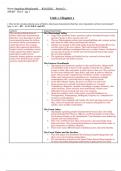
AP United States History (APUSH): Unit 1 Homework Notes
These notes answer questions related to Chapter 1 of the textbook, America's History, For the AP® Course 8th Edition, designed for Unit 1 of AP United States History (APUSH). I deeply explain how the environment affected various Native American cultures, including those of the Mississippi Valley, Eastern Woodlands, Great Lakes, Great Plains, and the Rockies, Southwest, and Pacific Coast. I explain why Europe's desire for an ocean route to Asia led to contact with Africa, especially in th...
- Book
- Interview
- • 4 pages •
These notes answer questions related to Chapter 1 of the textbook, America's History, For the AP® Course 8th Edition, designed for Unit 1 of AP United States History (APUSH). I deeply explain how the environment affected various Native American cultures, including those of the Mississippi Valley, Eastern Woodlands, Great Lakes, Great Plains, and the Rockies, Southwest, and Pacific Coast. I explain why Europe's desire for an ocean route to Asia led to contact with Africa, especially in th...
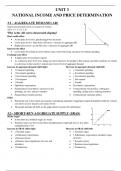
AP Macroeconomics Unit 3: National Income and Price Determination
These notes are for Unit 3 of AP Macroeconomics but can be used by anyone looking to understand the AD-AS model, fiscal policy, and how the economy fixes itself from a recession/inflation. Aggregate demand (AD), Short-run aggregate supply (SRAS), and long-run aggregate supply (LRAS) are all defined, explained, and demonstrated with a graph. I also include multiple factors for an increase and decrease in all 3 of these things, and the 3 effects of why AD is downward sloping. The short run and...
- Interview
- • 6 pages •
These notes are for Unit 3 of AP Macroeconomics but can be used by anyone looking to understand the AD-AS model, fiscal policy, and how the economy fixes itself from a recession/inflation. Aggregate demand (AD), Short-run aggregate supply (SRAS), and long-run aggregate supply (LRAS) are all defined, explained, and demonstrated with a graph. I also include multiple factors for an increase and decrease in all 3 of these things, and the 3 effects of why AD is downward sloping. The short run and...
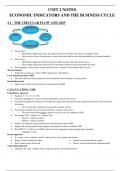
AP Macroeconomics Unit 2 Notes: Economic Indicators and the Business Cycle
These notes are for Unit 2 of AP Macroeconomics but can be used to help anyone wishing to study GDP, inflation, economic indicators, and the business cycle. In this document, the circular flow of income between product and factor markets is explained and demonstrated with a graph of the circular flow of income. The following components of GDP are defined and explained in-depth: the 3 ways of calculating GDP (expenditures approach, income approach, and value-added approach), what GDP excl...
- Interview
- • 5 pages •
These notes are for Unit 2 of AP Macroeconomics but can be used to help anyone wishing to study GDP, inflation, economic indicators, and the business cycle. In this document, the circular flow of income between product and factor markets is explained and demonstrated with a graph of the circular flow of income. The following components of GDP are defined and explained in-depth: the 3 ways of calculating GDP (expenditures approach, income approach, and value-added approach), what GDP excl...

AP Economics Unit 1 Notes: Basic Economic Principles
These notes are based on Unit 1 of both AP Macroeconomics and AP Microeconomics; however, they can be used by anyone who wants to gain an understanding of basic economic principles. It defines multiple words, including opportunity cost, scarcity, the factors of production, efficiency, comparative advantage, absolute advantage, demand, supply, the law of demand, the law of supply, surplus, and shortage. The following charts are included: linear Production Possibilities Curve (PPC), concave PPC, c...
- Interview
- • 6 pages •
These notes are based on Unit 1 of both AP Macroeconomics and AP Microeconomics; however, they can be used by anyone who wants to gain an understanding of basic economic principles. It defines multiple words, including opportunity cost, scarcity, the factors of production, efficiency, comparative advantage, absolute advantage, demand, supply, the law of demand, the law of supply, surplus, and shortage. The following charts are included: linear Production Possibilities Curve (PPC), concave PPC, c...
